Review: Coolpad Conjr
Jan 18, 2017, 10:15 AM by Eric M. Zeman
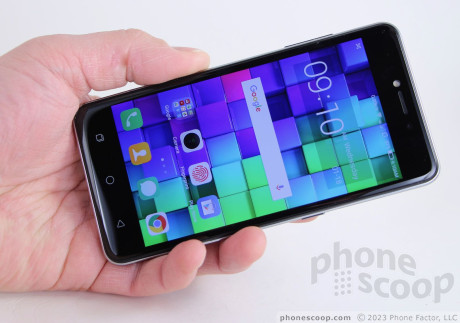
Coolpad's latest smartphone for the U.S. is the Conjr, a low-cost Android handset that's sold unlocked. The phone boasts a relatively attractive design, but peddles mid-range specs at best. Here is Phonescoop's in-depth review.
Is It Your Type?
The Coolpad Conjr is an inexpensive Android handset that marries reasonably good looks with relatively basic specs. The result is a capable device for those on a budget who prefer unlocked phones.
Body
Coolpad hopes you'll judge the Conjr by its cover, not its capabilities. The phone ticks off most of the boxes that define what's popular in phone design these days: curved glass, metal frame, metal body panels, and a classy look. The Conjr works all sorts of magic on the eye of the beholder, but I'm not sure there's as much substance underneath the surface as the Conjr implies.
I'd describe the Conjr as an affordable, premium-looking phone. The 2.5D curved glass fits into a chamfered metal frame with chrome accents. An attractive aluminum panel covers most of the back, and it, too, is framed in chrome that helps define its shape. The black front mixed with dark gray metals and shiny accents give your eyes lots to pay attention to. I wish the overall shape had a bit more personality, but the Conjr could easily fool you into thinking it costs twice as much as it does (at least, from a distance.)
Coolpad could have made the phone a bit smaller. Handsets with 5-inch displays typically enjoy compact footprints. Sadly, the Conjr's 5-inch screen is surrounded by really thick bezels that push the dimensions out more than would seem necessary. The phone isn't huge though, and people who lean toward average-sized devices may find it works well for them. I was able to reach most of the display with my thumb, and had no trouble pushing the phone into my pockets. The curved rear panel really helps, and I appreciate the smooth shape.
The Conjr is assembled from fine materials. I like the feel of the glass front and metal rear panel, in particular. All the components are fitted together tightly. There are no gaps or other odd spaces between the pieces. The Conjr isn't rugged, but it feels strong and inspires confidence. Most people should be pleased with the phone's quality. It won't fool you into believing it's a flagship-class handset, but the Conjr is no cheap-o.
The phone's face is rather plain. Like many devices, black glass covers the entire front panel. Functional elements are visible above and below the display. The only design feature breathing any sort of life into the phone is the chrome accent that circles the glass. The speaker up top is flanked by a user-facing camera and a user-facing flash, which is still somewhat of a rare feature in this class of device. Three capacitive buttons (app switcher, home, back) fill the bottom bezel, each of which is painted on in chrome. The buttons don't offer any sort of physical definition, but they are still easy to find and use thanks to lighted icons and haptic feedback.
The frame is broken up on all four sides by at least one button or port. The volume toggle is on the left edge of the Conjr. It has an excellent profile and very good travel/feedback. You can't miss this button. The same is true of the screen lock button; it's positioned near the middle of the right side. Though it's smaller than the volume toggle, the screen lock button is just as easy to find and use. You'll also find the SIM card tray on the right edge. You'll need a paperclip or other tool to eject it. The tray accommodates either one SIM card and one memory card, or two SIM cards. (This is becoming a common configuration on unlocked phones lately.) A headphone jack is found on the top, while a microUSB port is located on the bottom.
I'm a bit disappointed about the microUSB port. Many phone makers are (finally) adopting the USB-C port in real numbers and there's no reason for any phone in 2017 to have microUSB. USB-C is reversible and easier to use. MicroUSB is beginning to feel like laziness on the part of device manufacturers.
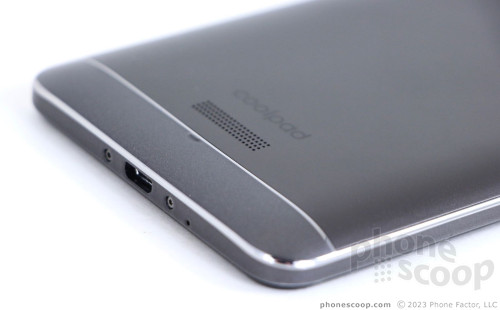
The Conjr's rear panel has a lot going on. First, chrome is everywhere. It runs around the outer edge, across the back, and encircles the camera, fingerprint reader, and even the flash. The chrome accents catch light constantly and pull your eyes in. They're hard to miss.
An aluminum shell forms the majority of the back side. It has a nice matte paint job that I like and a tight curve as it approaches the side edges. Coolpad made use of two plastic end caps at the top and bottom of the rear panel to accommodate the phone's antennas. Though the end caps are gray, it's clear Coolpad didn't attempt to match the color of the aluminum shell. The endcaps have their own color, shading, and texture and I'm fine with that. The camera module is raised a bit and the fingerprint reader is depressed a bit, which makes them easy to tell apart by feel.
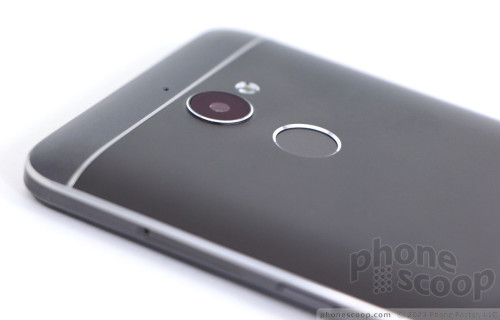
The rear cover cannot be removed; neither can the battery.
The Conjr is a respectable piece of hardware from Coolpad. The phone relies on solid materials, is fitted together well, and is easy to use.
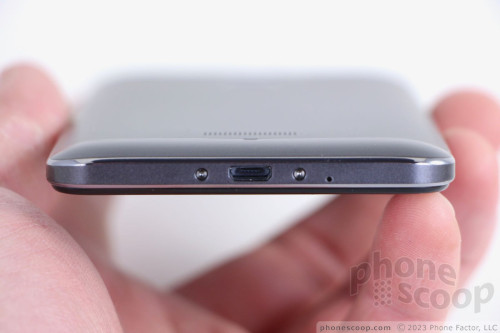
Screen
Coolpad gave the Conjr a 5-inch, 720p HD display. It relies on an IPS LCD panel. Screens this size can get away with the 720p resolution and the lower resolution helps keep the cost down. The pixel density is good enough on the Conjr that I didn't see any individual pixels, and on-screen elements are smooth and sharp. Brightness could be a little bit better. The phone delivers more than enough light for indoor use, of course, but it's a bit hard to see outside under a bright, sunny sky unless you crank the brightness all the way up. The light sensor wasn't up to the task, so manually managing the brightness is often necessary. Colors are accurate and viewing angles are very good for an LCD display. It's a fine screen for this class of device.
Signal
Coolpad sells the Conjr unlocked with support for GSM/LTE networks such as those run by AT&T/Cricket and T-Mobile/MetroPCS. LTE support is limited to bands 2, 4, 5, 7, and 12, which gives the Conjr decent compatibility with U.S. networks, but definitely not the best. I tested it on AT&T's network in the New York City area and came away unimpressed. The phone doesn't keep up with today's branded AT&T phones, nor with many other unlocked phones.
The Conjr was able to find AT&T's network everywhere I took it. It connected calls no problem, mostly on the first dial. The phone held onto calls at highways speeds, too, and didn't drop nor miss any.
But I found limitations in data performance. Though the Conjr showed the "4G LTE" signal much of the time, it dipped down to "H" (or 3.5G) more often than other phones I've tested recently. Data speeds were mediocre at best. Media-heavy social networks such as Facebook, Twitter, and Instagram were sometimes a bit sluggish. Streaming media such as Spotify and YouTube over cellular was fraught with stuttering, buffering, and drops. You'll do well to know where WiFi is located if you plan to watch videos.
Sound
The Conjr is pretty good at making phone calls. The earpiece delivers enough volume for use in and around your home or office, as well as noisier spaces such as coffee shops and city streets. You will need to keep the volume set up all the way up most of the time. Call clarity was surprisingly good. Voices in the earpiece were free of distortion and had a warm timbre. People I spoke to through the Conjr said I sounded good.
The speakerphone is rather quiet. Since the speaker is on the back, you'll get the best results by laying the phone down on a hard, flat surface. I found my hand often muffled the speakerphone when holding the phone. Clarity via the speakerphone is decent, but introduces a bit of snap, crackle, and pop from time to time.
Music, ringers, and alerts aren't quite loud enough for my tastes, but the vibrate alert is pretty good.
Battery
The phone contains a 2,500 mAh battery and it will push from breakfast to bedtime... most of the time. As always, I tested the phone with brightness set at 50% and all the radios on. I used the phone heavily and spent lots of time streaming Spotify and watching YouTube (via WiFi). On the majority of days the Conjr made it to 11pm with 10-15% power left, but on several occasions it was bottoming out closer to 10pm. I was hoping for a bit better.
Coolpad installed a really basic battery saver tool. It doesn't have an automatic on/off function so you have to toggle it on manually. All it does, as far as I can tell, is reduce screen brightness and limit notifications. I can't say it does much to improve battery life.
The Conjr doesn't support wireless charging nor rapid charging.
Bluetooth, GPS, NFC, WiFi
The phone's ancillary radios do their job with gusto. I didn't hit any snags pairing and connecting the Conjr to other Bluetooth devices, such as headsets, speakers, and wearables. Voice calls sounded good via dedicated mono headsets, but rather iffy through my car's hands-free system. Music streamed to a speaker sounded decent.
The Conjr's GPS radio worked. Location accuracy was often as good as 10 feet, but averaged closer to 20. The phone pinpointed me in just a few seconds.
The WiFi radio was a life-saver.
The Conjr doesn't have NFC.
Comments
No messages


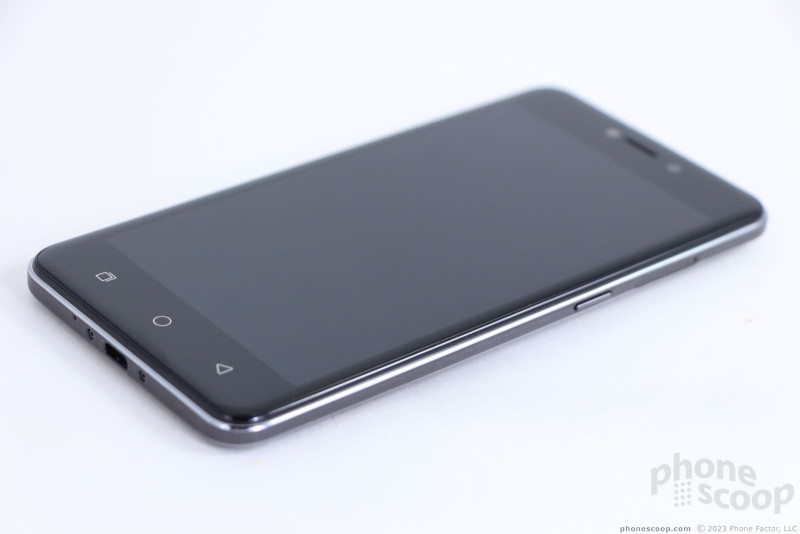















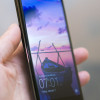 Hands On with the Coolpad Conjr
Hands On with the Coolpad Conjr
 iPhone 14 Plus Offers a Big Screen For Less
iPhone 14 Plus Offers a Big Screen For Less
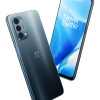 OnePlus Nord N200 Will Offer 5G Starting at $216
OnePlus Nord N200 Will Offer 5G Starting at $216
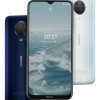 Nokia Brings New G Series to US
Nokia Brings New G Series to US
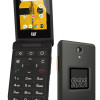 CAT Puts Android With Play Store in a Compact Flip Design
CAT Puts Android With Play Store in a Compact Flip Design
 Coolpad Conjr
Coolpad Conjr



